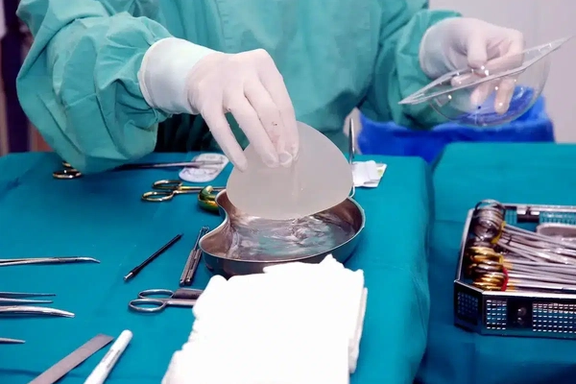Loans and pawned gold: Iranians reveal cost of beauty surgeries

Cosmetic surgery clinics in Iran are reporting record demand as social media trends push women toward extreme procedures often financed through credit and loans.

Cosmetic surgery clinics in Iran are reporting record demand as social media trends push women toward extreme procedures often financed through credit and loans.
Iran, along with the likes of Brazil and South Korea, has long prized surgically enhanced beauty standards especially in the form of rhinoplasty. But demand has now expanded to liposuction, tummy tucks and breast and buttock augmentations.
Women make up nearly 80 percent of patients, with operations estimated to number several hundred thousand each year.
One aspiring patient, Neda, 29, from Tehran, confessed to seeking to reshape her body under the influence of her partner. “My boyfriend keeps liking bloggers with huge butts and breasts, and I want to be what he likes,” she wrote.
“I’m terrified he will lose interest if I don’t change.”
Another, Sara, 31, also from Tehran, discussed the financial burden. “I’m paying in monthly installments. That’s the only way I can do this. I just want my body to look right in clothes.”
Interviewees spoke to Iran International on condition that their names not be revealed.
A theocracy for 46 years which has enforced Islamic veiling and loose clothing on women, the country has inched toward more laxity as a stringent new hijab and chastity law was paused this year out of concern it would stoke unrest.

'Can't look away'
Ladan, 27, described proudly how cosmetic operations reshaped her social life as much as her body. “With a Brazilian butt and big breasts, all eyes are on me at weekend gatherings,” she said. “Even married men can’t look away.”
Her story reflects how surgery is often pursued not in private but for public recognition.
This view is challenged by many women who point to the subtle but constant pressures of patriarchy behind these choices.
"A question I often hear here is women asking men, 'are you a boobs or butt guy?'” UK-based Iranian feminist Samaneh Savadi wrote on X. “Each time I’m surprised and wonder to myself whether these women are secretly hoping the answer will be, ‘Neither, personality matters more to me’.
"As American author Naomi Wolf has argued, a culture fixated on female thinness is not an obsession about female beauty, but an obsession about female obedience.”
Image obsession
Instagram plays a central role in all of this.
Beauty bloggers and influencers, their photos sculpted by filters as much as surgery, set new expectations for how a body should look. For many, the pressure is relentless.
“It’s not just about beauty—it’s about staying relevant,” Sara explained. “You see the perfect pictures and wonder if anyone will notice you if you don’t look like that.”
Not all accounts are triumphant. Farnaz, 36, a mother of two, described the sacrifices behind her decision.
“After childbirth my breasts sagged and my stomach was loose. I feared my husband would lose interest. I sold my jewelry to pay for implants, lipo, and a butt lift. Now he is pleased, and my sex life mattered more than gold.”
Such experiences show how beauty operations are framed not only as self-improvement but as survival—of marriages, relationships or social standing.
While women make up the majority of patients, there is a surge in male clients seeking procedures once considered taboo.
Popular operations include hair transplants, liposuction, jawline contouring and even pectoral and ab sculpting.
Clinics advertise these services in the same breath as breast lifts or nose jobs, underscoring how beauty standards are increasingly marketed to men as well.
Beauty prices
Price lists explain the demand. Breast augmentations range from $850 to $1,700. Liposuction for one area costs $300–600, with full-body packages starting at $1,800. Brazilian butt lifts run between $500 and $1,500.
The contrast with global prices is stark. In the United States or the United Kingdom, such procedures often exceed $10,000. Iran’s bargain rates draw foreign clients, while locals depend on financing.
Clinics advertise repayment plans that spread costs across years, normalizing surgery as a consumer purchase.
'No magic'
But beneath the glossy ads lie dangers.
Qualified surgeons warn of unlicensed operators who flourish on social media, promising impossible results with manipulated images in “before and after” galleries.
With no central registry, complications are hidden, and patients often rely only on word of mouth.
“People believe surgery is magic,” a Tehran-based surgeon who spoke on condition of anonymity told Iran International. “But bodies are different, and there are limits. Some patients don’t want to hear that part.”

From boyfriends comparing them to bloggers to mothers pawning jewelry to preserve marriages, stories in clinics and forums highlight the personal sacrifices behind Iran’s cosmetic surgery boom.
In today’s Iran, beauty is pursued through loans and credit which buy beauty and lasting financial strain in equal measure.